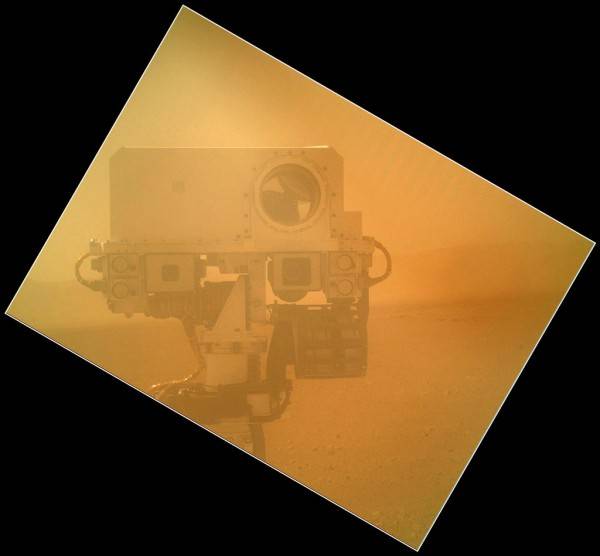This article is more than 1 year old
Curiosity clears things up
Removes dust cover to produce sharpest images to date
Curiosity has dusted off the Mars Hand Lens Imager (MAHLI) to take new snaps of the red planet's surface.
MAHLI is described as being analogous to the small magnifiers geologists like to wear about their necks. NASA describes it thusly:
“The self-focusing, roughly 4-centimeter-wide (1.5-inch-wide) camera will take color images of features as small as 12.5 micrometers, smaller than the diameter of a human hair. MAHLI carries both white light sources, similar to the light from a flashlight, and ultraviolet light sources, similar to the light from a tanning lamp, making the imager functional both day and night. The ultraviolet light will be used to induce fluorescence to help detect carbonate and evaporite minerals, both of which indicate that water helped shape the landscape on Mars.”
MAHLI has worked just fine since Curiosity landed and recorded some of its first images, but did so beneath a dust cover. That shield was slipped off for the first time over the weekend, with the middle image below showing images of previously-unobtainable clarity.

Shots of the Martian surface taken by the Mars Hand Lens Imager. The middle shot is sans dust cover
Before the uncovered shot was captured, MAHLI was also moved into position to take a self-portrait of the rover. That's almost certainly a first act of interplanetary robot narcissism, albeit one taken at an odd angle necessitating a large black border.

Curiosity's self portrait, captured with the MAHLI camera
The photos above are lovely, but not all is well on board the nuclear powered tank as recent tests on its arm produced “caution about a temperature reading”. Some tests were postponed as a result of those readings, which were later “resolved” satisfactorily. ®
